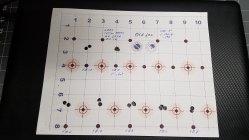D Coots
Silver $$ Contributor
I shot a lot with Gene at our local club in Tomball, and watched him break in many barrels, and tune them.
Dave, I tend to agree with you. Gene more or less had a “pet“ load that would use in his new barrels, which would be either a Krieger or a Bartlien. He would adjust the “snubber”, (one piece tuner with a rubber dampening feature), to where he felt the barrel was in it’s optimum vibration node, then start tuning the load in our more conventional methods with load, seating depth and neck tension untill he found his competitive tune.
He would be the first one to tell you he then avoided moving the tuner after that. He usually would tweak the powder charge a little to keep things going.
I sort of follow the same pattern with both my 6PPC’s and my 30BR. I have a load in either that I know will shoot in a cut rifled Krieger or Bartlien, My tuners are also a ‘snubber’ style.
I believe that you can find the correct vibration node that a barrel likes with a tuner, but to finally get the rifle at that magical “.200 or less agging capability”, the load, ie the correct combination of powder charge, neck tension, and seating depth has to be right.
WELL, WELL, WELL.
Thanks for the clarification Jackie. I was thinking on the Snubber I had of Gene's the instructions said to tune the rifle and then adjust the snubber. Then again maybe not, it's been a while.
Later
Dave
Last edited:











